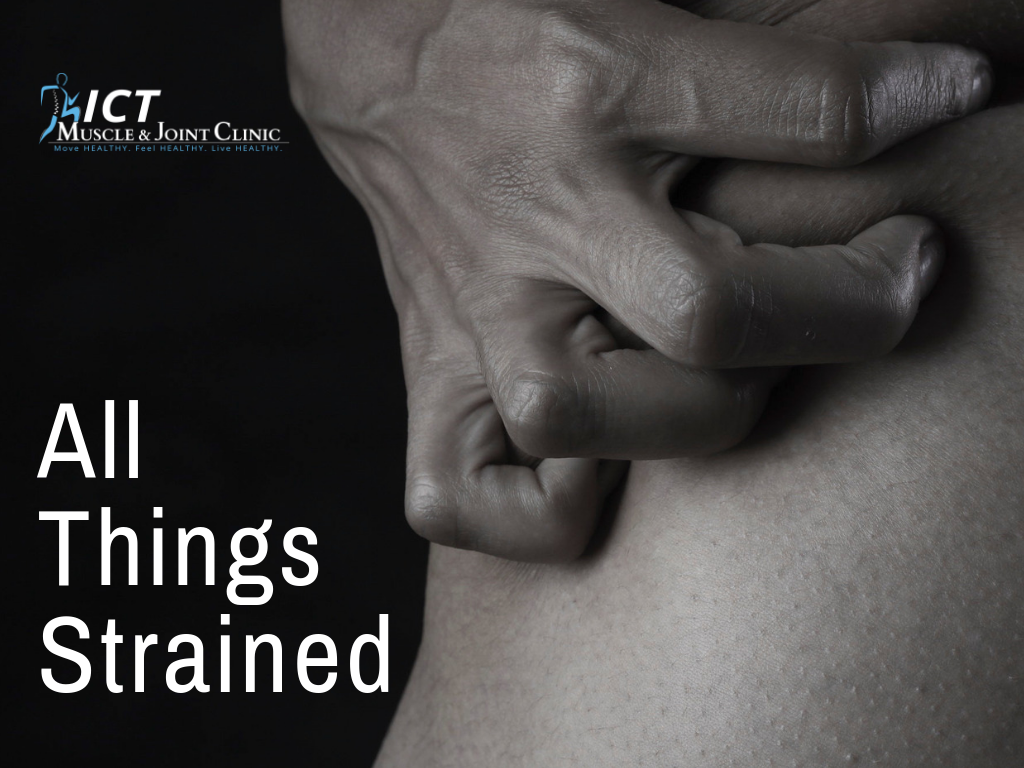All Things Strained
Strain to the body can be both good and bad. Like all things in life it’s a balancing act. Everyone has heard of a strain/sprain, or over-straining yourself. Usually strain is thought of as bad however strain can also be good. But how do we know when strain is good vs bad? To understand good vs bad strain, we need to understand how strain occurs. Strain to the body is caused in three ways: load, speed, duration.
Defining Load
Load is a weight or source of pressure borne by someone or something. An example of load is lifting a heavier weight - ie deadlifting 400lbs instead of 300lbs. The increased load makes your body work harder to stabilize and move, increasing strain, while challenging the body further.
Defining Speed
Speed is the rate at which someone or something is able to move or operate. An example of speed is simply running or walking. A true example of speed, by definition, is maximum output - ie full speed with sprinting.
Defining Duration
Duration is the time during which something continues.The process from start to stop of jogging a 10K is duration. Or, duration can be a cumulative effect as in crossfit workouts. The EMOM might be 20 minutes but the workout were bursts of an exercise with rest.
Strain & Fitness
When the body becomes strained, it’s due to overloading one, if not all, of these three categories. Any activity, workout, or training program can cause over-strain. Different sports or activities cause different degrees and types of strain. It's a spectrum. At one end there is walking and the other there is Crossfit. Both can cause increased strain depending on the programming, wants, and desires. If the goal is increasing strain for fitness and sports, then your goal is to maximize overall strain to the body, improve recovery, and avoid the point of absolute fatigue. This is good strain! Understanding the functional gap with fitness and sport-related training is a must for a well-educated athlete to succeed. Luckily when you become "over-strain" causing pain, there are also ways to increase strain therapeuticlly.
Strain & Therapy
In rehab, the goal might be to increase strain to the appropriate area(s) through chiropractic adjustments, physical therapy, myofascial release, dry needling, etc. By using these interventions, a chiropractor or physical therapist’s goal is to create positive strain and get you to reduce negative strain, so the body can heal. If you’re looking to maximize results, without any help, try using The 7 Most Important Things to Know for Self-Treating Movement Pain at home.
Positive and Negative Strain
Regardless of your health and fitness goals, strain can be both positive and negative. It depends on how you program different interventions into your life to achieve your goals (ie get out of pain or improve performance).
About the author
Dr. Keith Sparks is an award-winning chiropractor, functional medicine expert, and the co-founder of ICT Muscle & Joint Clinic. Dr. Sparks’ emphasis of care originated within the fields of rehabilitation, soft-tissue therapies, and chiropractic. To date, he has brought this unique combination of skills into union with functional medicine. The sole purpose of intertwining these distinct skills, knowledge, and services is to provide incomparable care to his local community. Dr. Keith Sparks is often seen in the Wichita, KS community speaking at business events and teaching health and performance classes.
